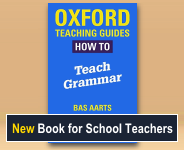Direct Object
Consider the examples below. What do the highlighted phrases add to the meanings?
- He stroked the dog. [W2F-018 #175]
- They carried mugs of beer. [W2F-018 #140]
These phrases tell us who or what is being 'verbed', i.e. who is undergoing the action denoted by the verbs, in these situations: the dog is stroked, the mugs of beer are carried. Without these phrases, our examples would be incomplete.
Welcome back!

Englicious is totally free for everyone to use!
But you will have to log in to see our library of teaching resources.
If you don’t have an account, that’s perfectly OK. You can register (for free).
It only takes a minute or two.

